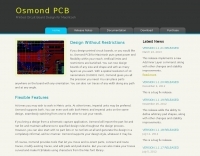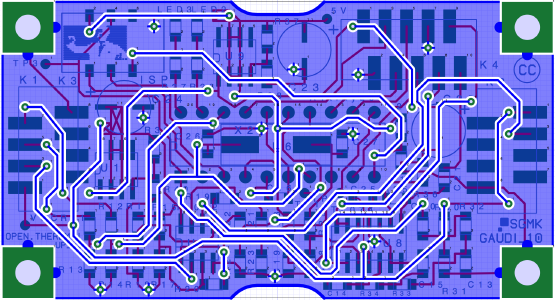

You can also use different language formats for creating your designs, including Gerber, Excellon, and DXF. It can import schematic capture applications and also maintain design rules. It supports both metric and imperial units and allows you to work with either unit type.

Its flexible features include variable trace width and spacing. It supports various shapes of pads, such as round, oval, and rectangular.

Osmond is a tool that can help to design printed circuit boards. This article will explore some of the features of Osmond’s PCB design program. Users can even use both systems within the same design. In addition, the Osmond PCB designer program promises flexibility, allowing users to use Metric and Imperial units. Users can find tutorials, support materials, and even custom libraries.
#Osmond pcb review free
This is a comprehensive Electronic Design Automation suite and toolkit that runs on Linux.A free Osmond PCB design program is available online, and novice and experienced PCB designers can use it. This is a schematic capture tool for use on Windows.
#Osmond pcb review software
#Osmond pcb review full
Here's the full list of PCB layout and design steps: Advanced Circuits is famous in the industry for its active customer base and best shipping record. Schematic Capture: Linking to Your PCB.Defining Design Rules and DFM Requirements.Īutodesk now offers a free version of Eagle.This version may be installed in several ECN-supported labs. Launching Eagle requires each user to login with an Autodesk ID. How do I choose a PCB material?Įlectrical functionality is based on PCB function, which makes it a good criterion for design-based circuit board material selection. Step 7: Add the Parts to the Schematic.Design is done in a document window.Step 6: Create a New Project and Schematic.Step 5: A Couple of Definitions Before We Begin.Step 1: A Quick Note on How Eagle Works.According to function, PCBs may be classified as the following board types: High Frequency (High Speed) – These boards can accommodate frequencies in the 500MHz – 2GHz range. The parts of a document window are shown in the images below. The first two pictures show the left and right portions of the tool bar at the top of the window. The tool bar contains many tools that let you manipulate objects such as parts, pads, and connecting traces. You select a tool by clicking on the tool. Many tools also have options that you can change by double-clicking the tool. A description of each tool can be found in the Tools section of this document.ĭirectly below the tool bar a message field provides useful information. As you move the cursor over pins, the message field lists the pin name. If the pin is part of some signal, the signal name is also listed.
:max_bytes(150000):strip_icc()/004_free-pcb-design-software-packages-818956-fc6c0cd96a204826a846126e2876d290.jpg)
On the right, the message field displays the X and Y coordinates of your cursor in either mils or millimeters. The bottom left of the design window looks like the picture shown above. The segmented control lets you select the current layer.


 0 kommentar(er)
0 kommentar(er)
